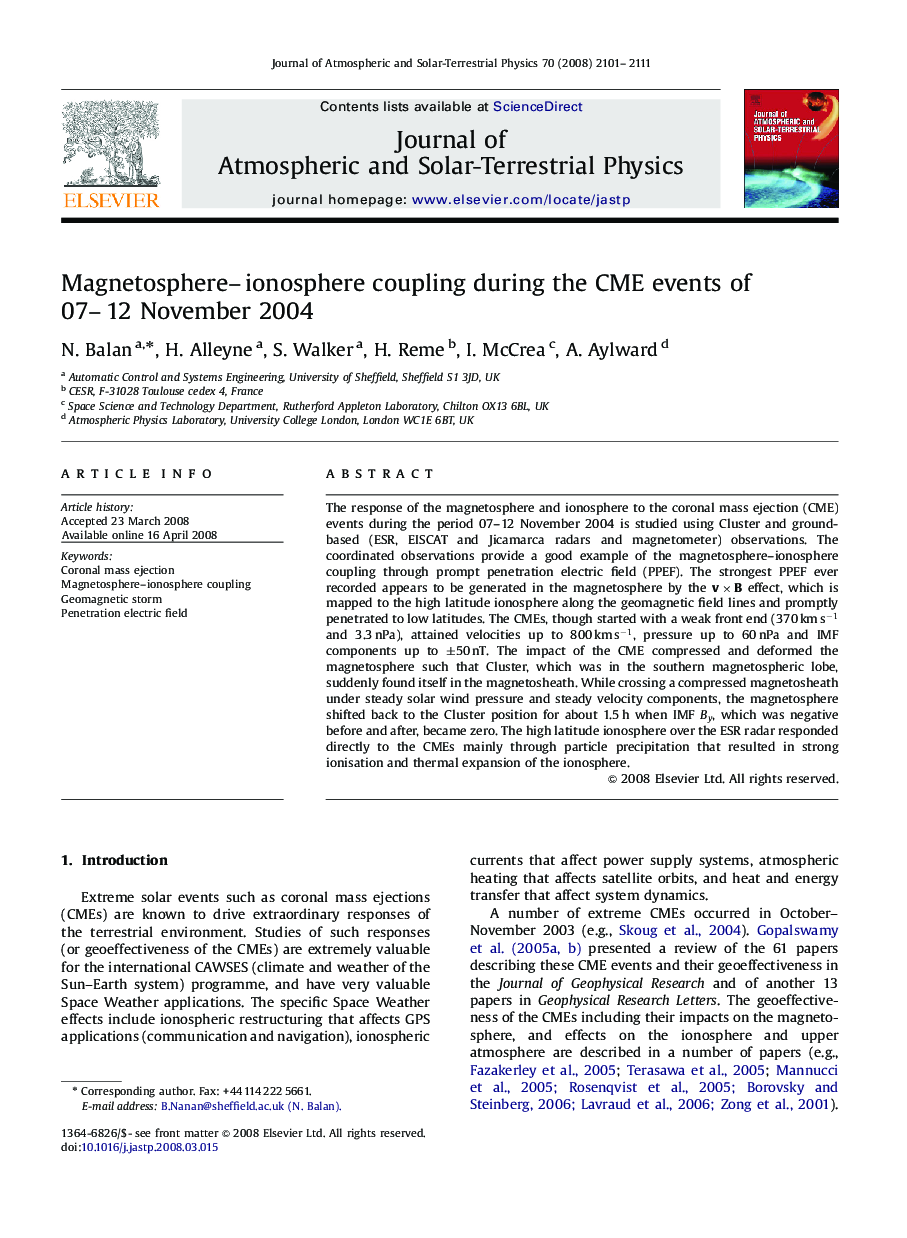| Article ID | Journal | Published Year | Pages | File Type |
|---|---|---|---|---|
| 1777789 | Journal of Atmospheric and Solar-Terrestrial Physics | 2008 | 11 Pages |
The response of the magnetosphere and ionosphere to the coronal mass ejection (CME) events during the period 07–12 November 2004 is studied using Cluster and ground-based (ESR, EISCAT and Jicamarca radars and magnetometer) observations. The coordinated observations provide a good example of the magnetosphere–ionosphere coupling through prompt penetration electric field (PPEF). The strongest PPEF ever recorded appears to be generated in the magnetosphere by the v×Bv×B effect, which is mapped to the high latitude ionosphere along the geomagnetic field lines and promptly penetrated to low latitudes. The CMEs, though started with a weak front end (370kms-1 and 3.3 nPa), attained velocities up to 800kms-1, pressure up to 60 nPa and IMF components up to ±50nT. The impact of the CME compressed and deformed the magnetosphere such that Cluster, which was in the southern magnetospheric lobe, suddenly found itself in the magnetosheath. While crossing a compressed magnetosheath under steady solar wind pressure and steady velocity components, the magnetosphere shifted back to the Cluster position for about 1.5 h when IMF ByBy, which was negative before and after, became zero. The high latitude ionosphere over the ESR radar responded directly to the CMEs mainly through particle precipitation that resulted in strong ionisation and thermal expansion of the ionosphere.
